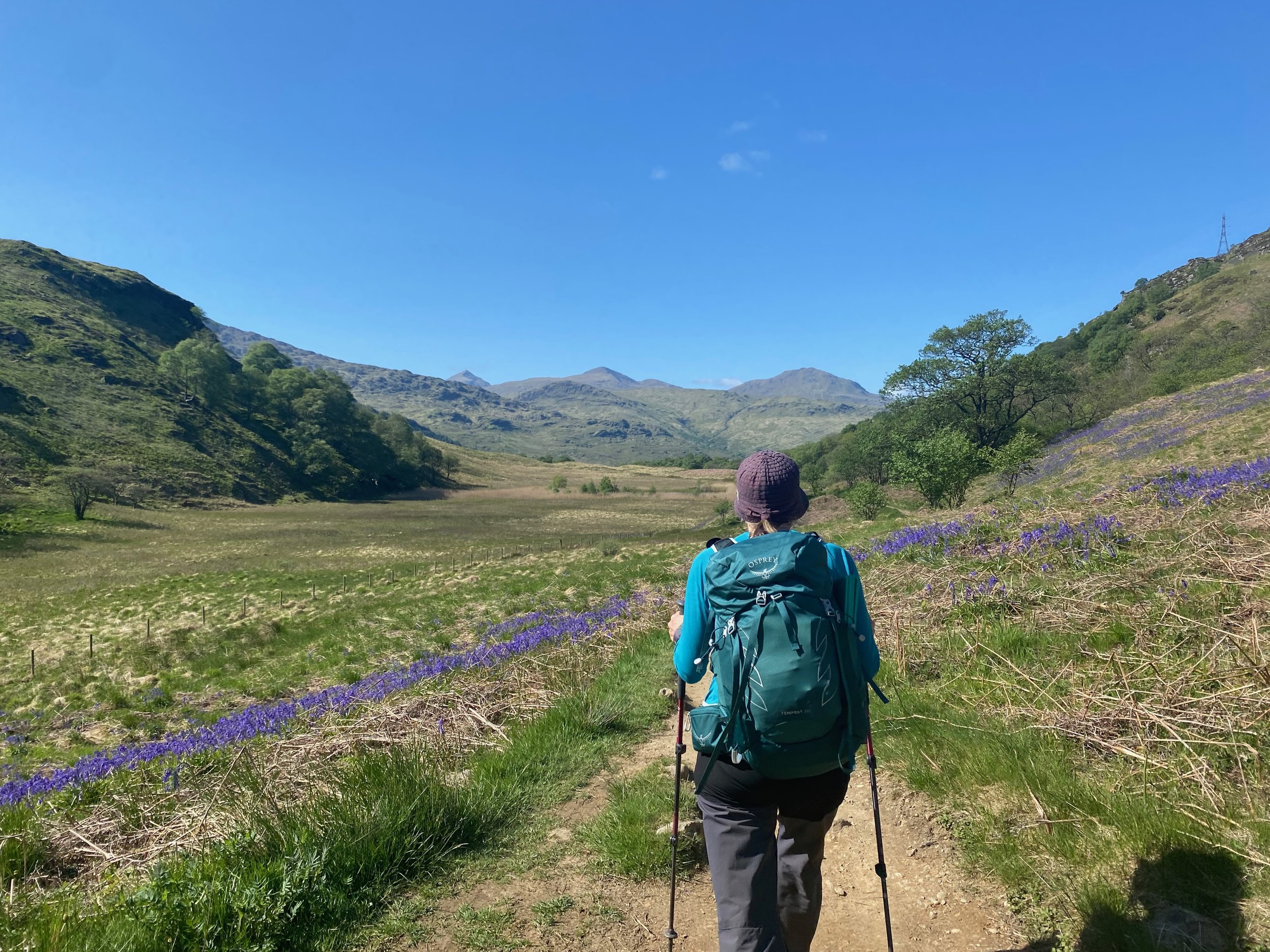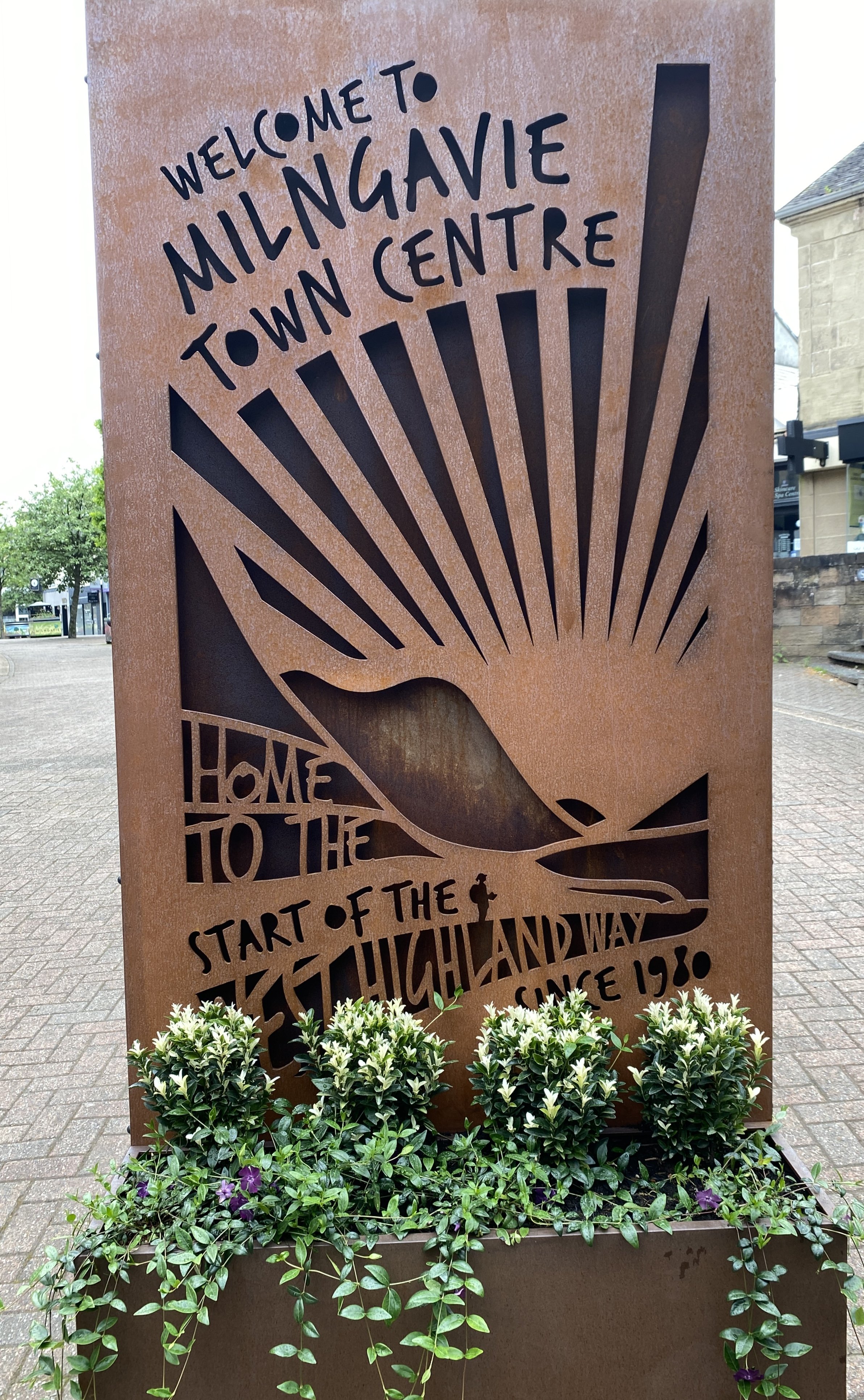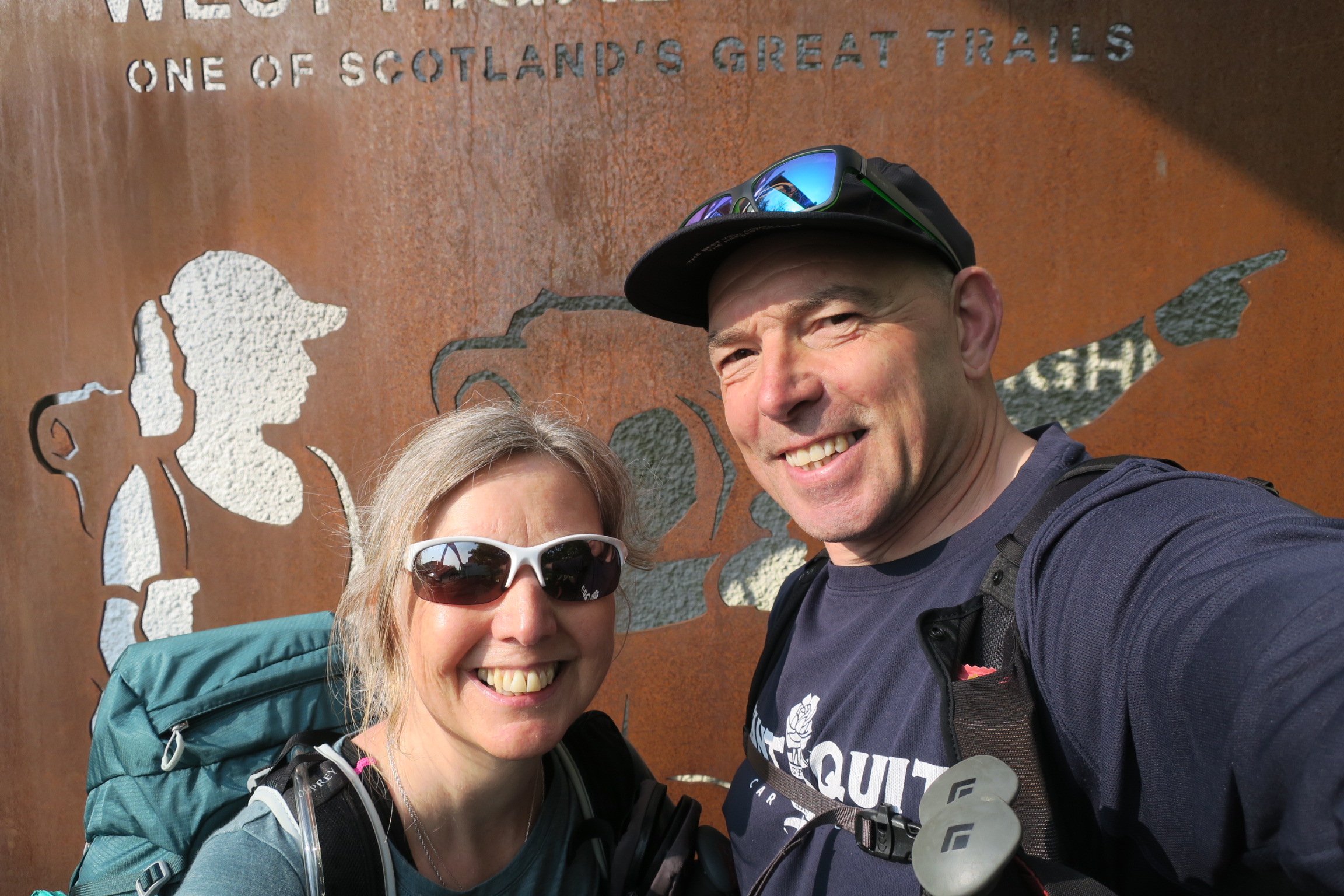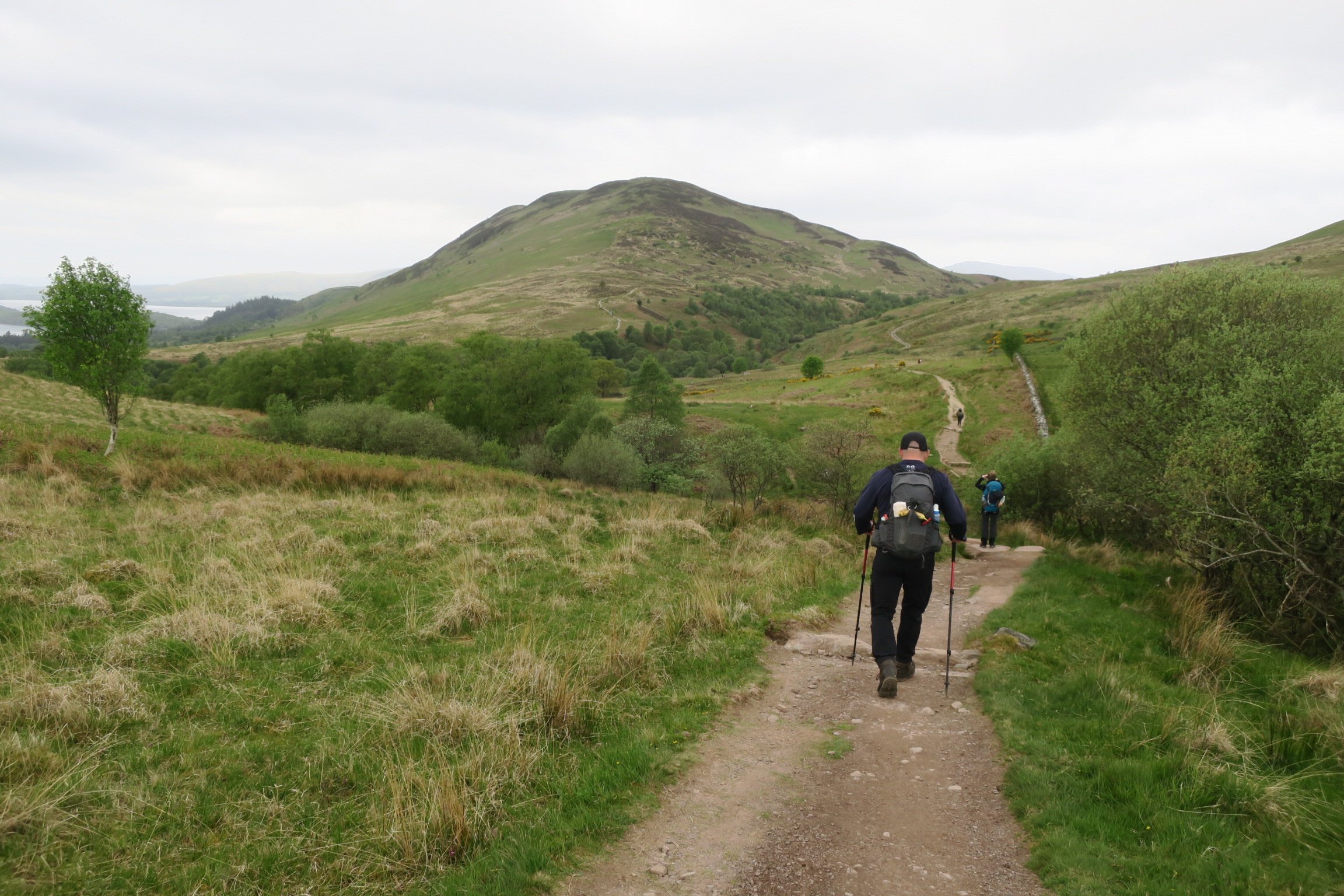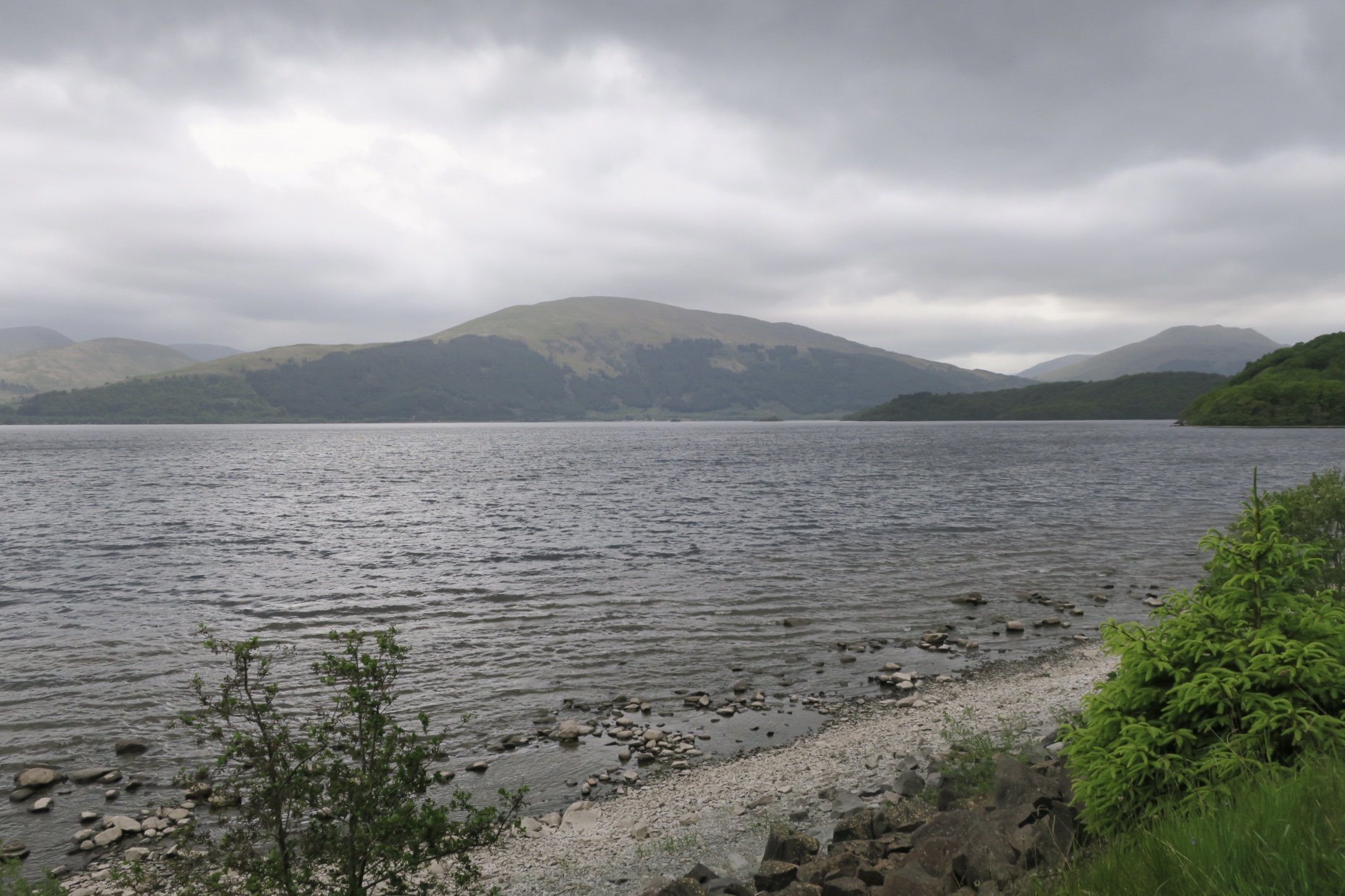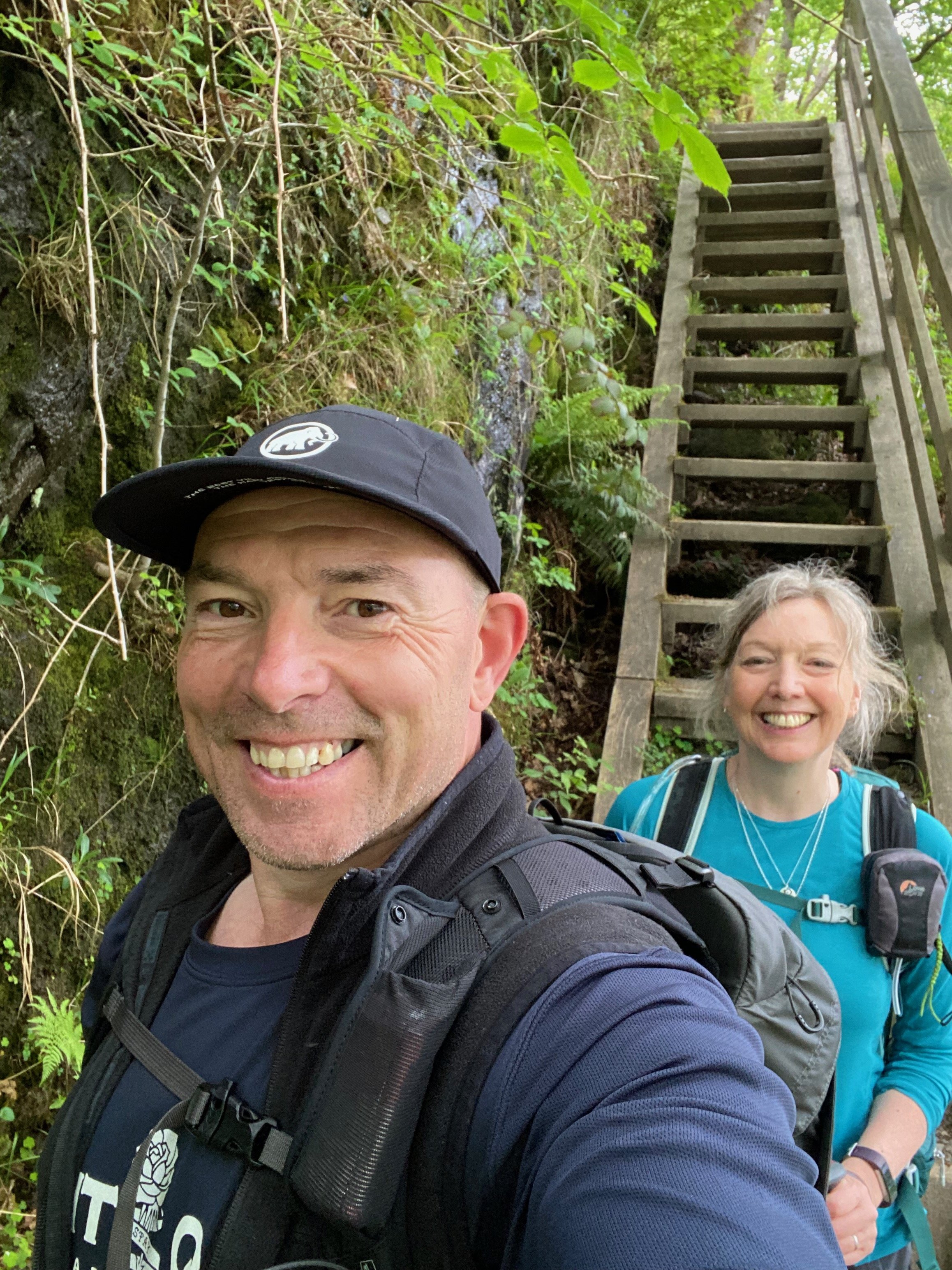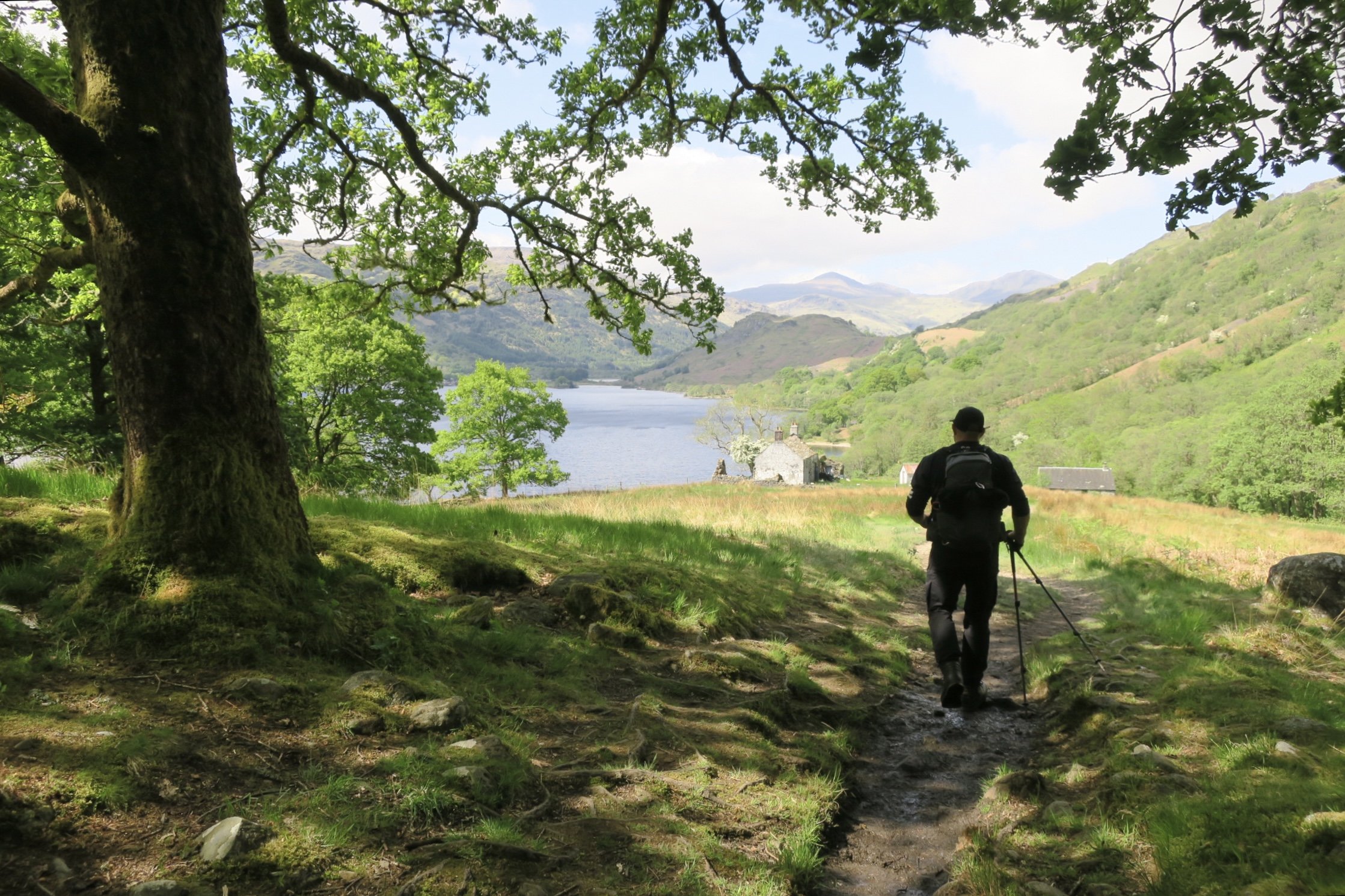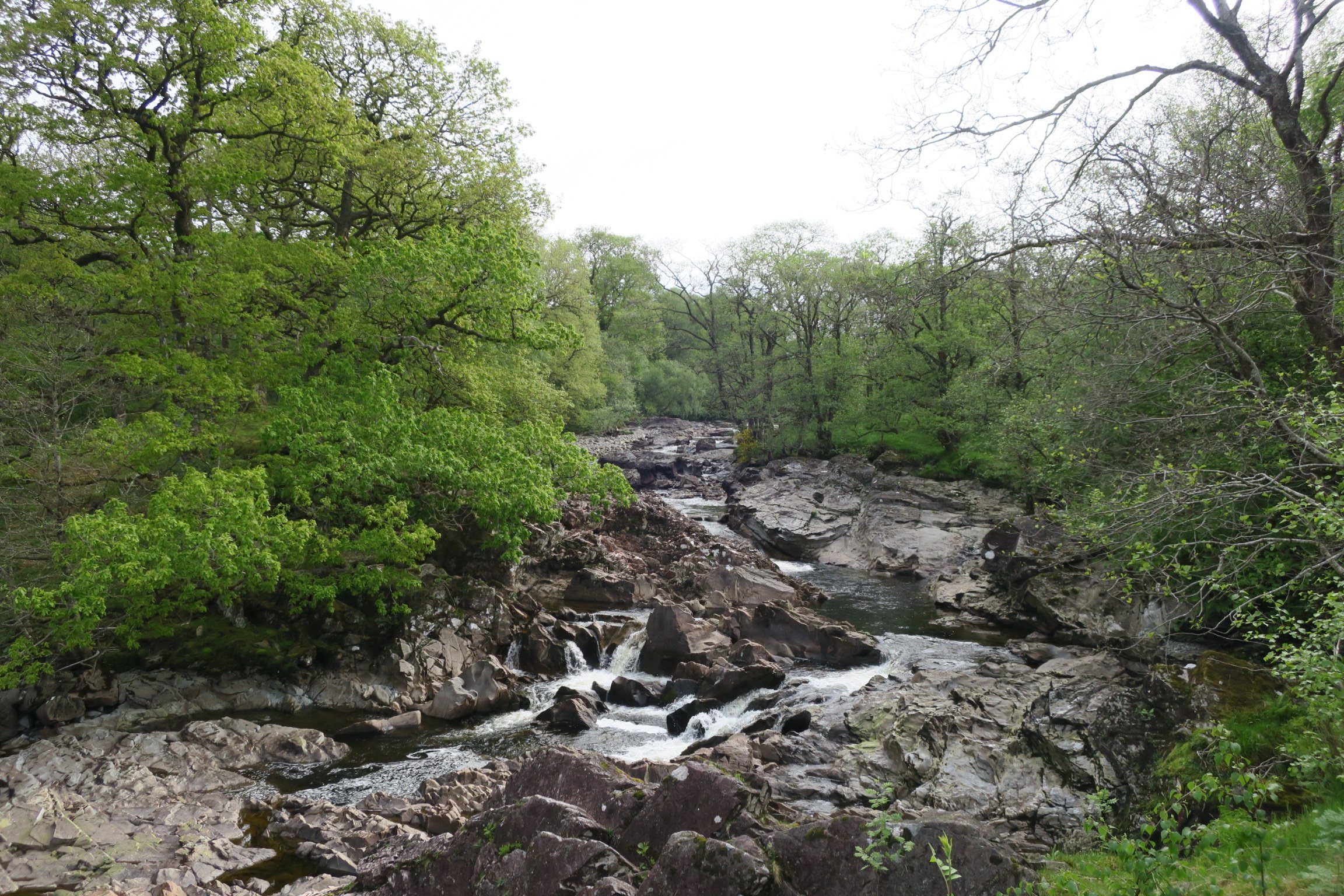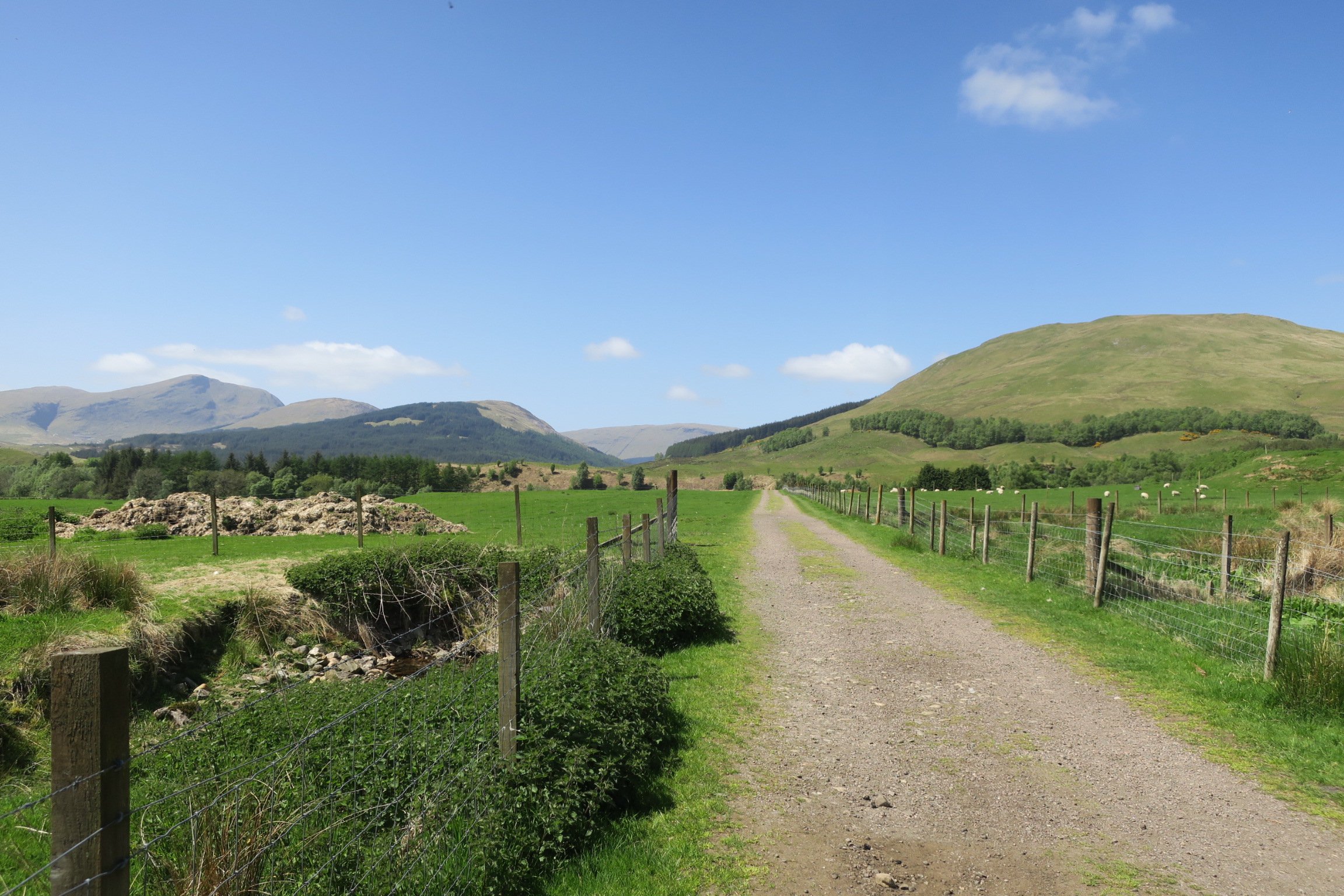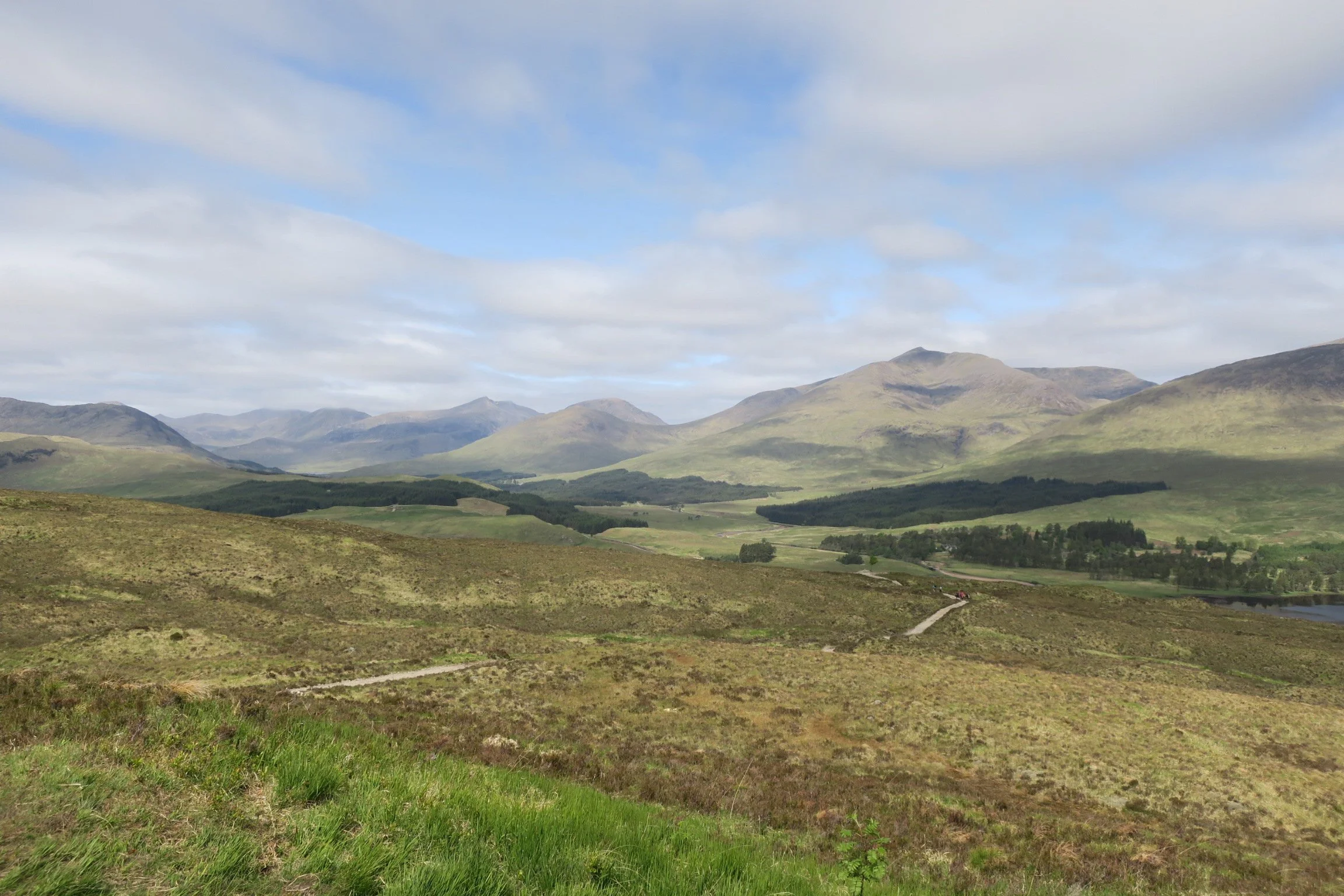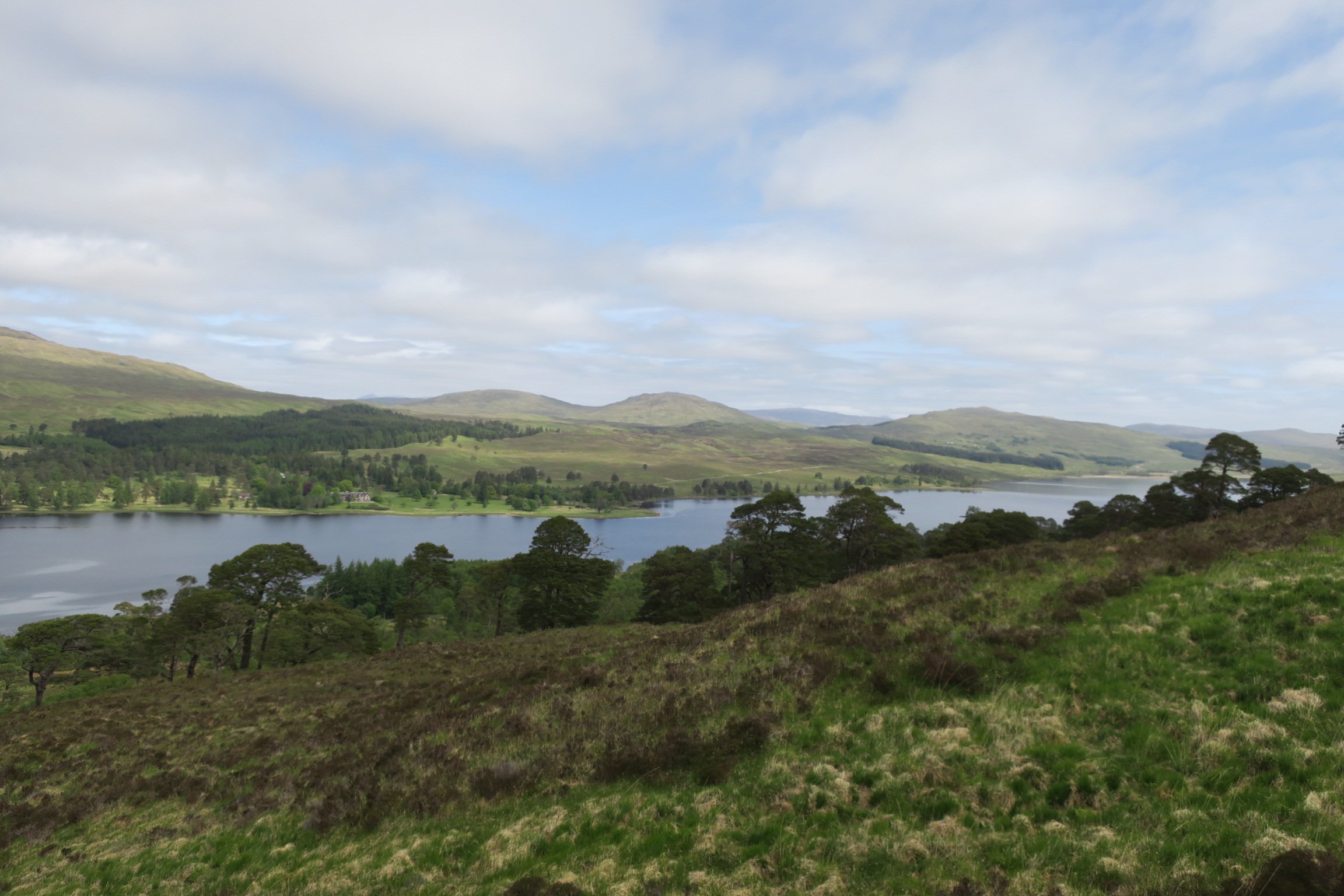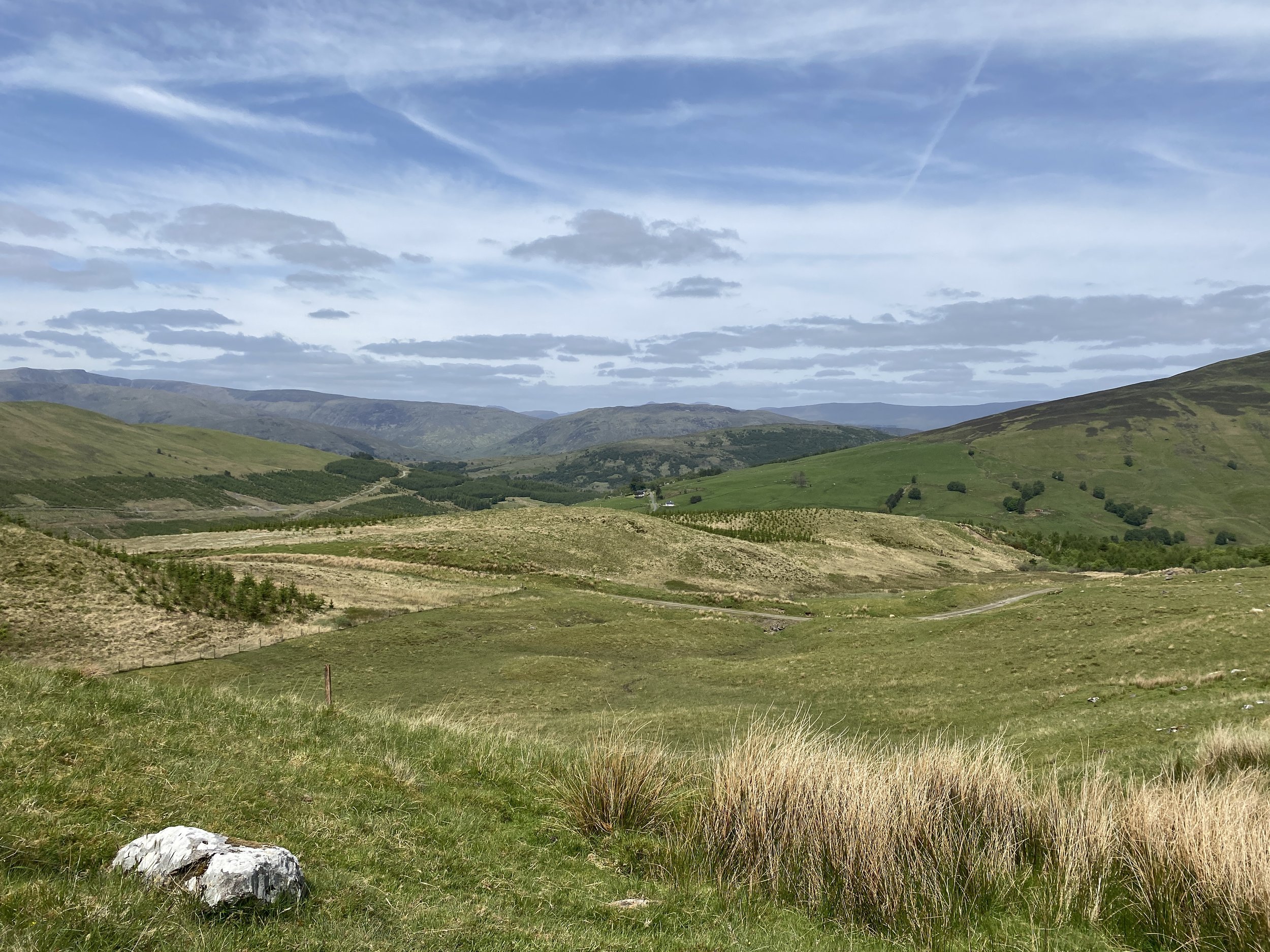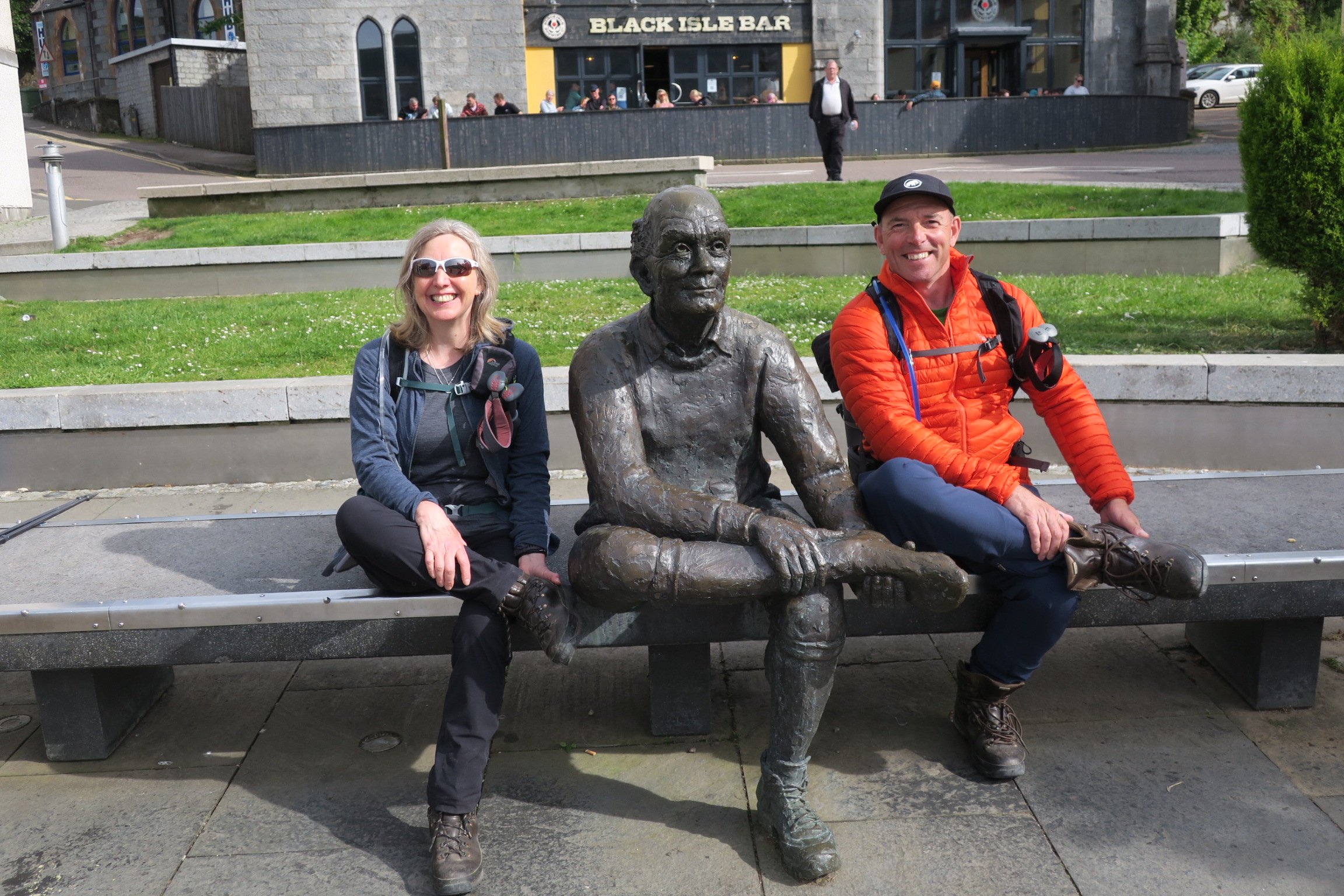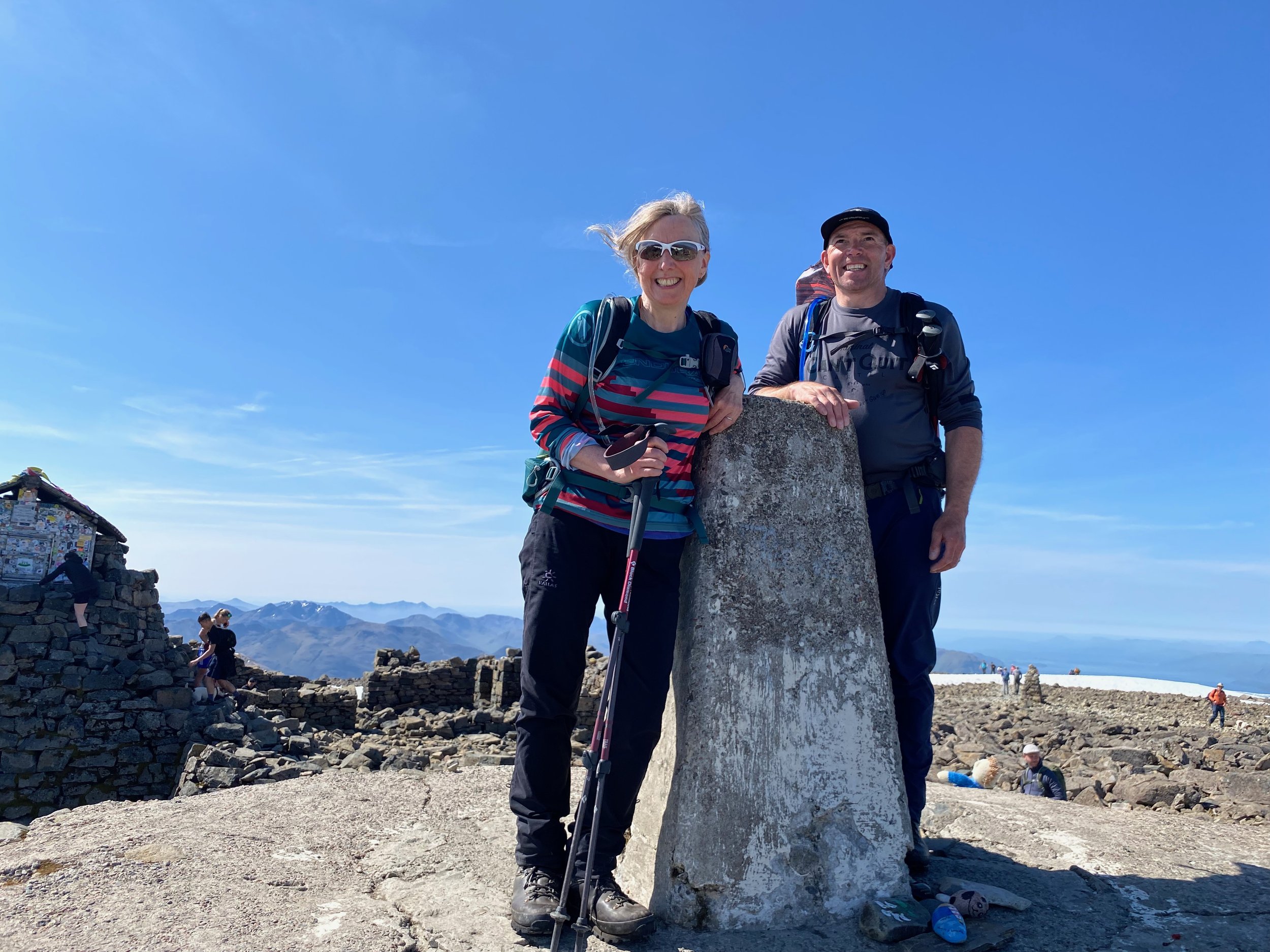Walking the West Highland Way: 7 day itinerary
I’d wanted to walk a long-distance path for years, often wondering how I’d get on. Would I have enough energy or strength to get up again day after day and walk the miles? Deep in my heart, I thought I’d love it. But maybe I’d find the opposite was true.
A few years ago, I nearly walked the Coast to Coast from St Bees Head to Robin Hood’s Bay. But the practicalities and cost tripped me up, and I never got to the starting line.
And, in my early 20’s, I nearly walked the first week of the Pennine Way from Edale to Malham where I’d grown up. We’d planned to camp each night, so had big heavy rucksacks full of kit (way before the days of lightweight backpacking). The first day to Crowden was a difficult 16 miles and I collapsed in the tent when we arrived. One of our group had bad blisters and we all felt the distance in our legs. So we bailed and walked out of Crowden to catch the train back home.
But neither experience put me off, both the Coast to Coast and the Pennine Way are still on my tick list.
When I was working with a personal trainer to build back my outdoor fitness in late 2022, he asked me to set a goal. By then, the West Highland Way (WHW) was on my radar. My husband had even bought me a map of the route the previous year.
It was 96 miles, in the Scottish Highlands, and could be done in a week.
Perfect!
Planning to walk the West Highland Way
The most important thing we’d read online was to plan the walk well in advance. So, six months before the trip, we booked the time off work and began looking at our options.
Our initial thoughts were to backpack and camp along the way. We sat down with the map and Google at our fingertips but ended up more confused than ever.
The first question was how long we expected to be able to walk each day. It was our first multi-day walk. Our first real backpacking trip. Our first big adventure in a few years. And we had no idea what the terrain was like. How long was a piece of string!
Without knowing how far we could walk each day, we couldn’t work out places to camp. And with the first part of the walk being in the Loch Lomond area, wild camping would be restricted.
It was becoming one big headache. Until we stumbled across an alternative way of doing things. The West Highland Way is so popular that there are tons of tour companies running self-guided walking holidays. They do all the hard work of planning and booking accommodation, leaving you free to enjoy the experience.
After a little research, we decided to go with Macs Adventure. It was a Glasgow based business, founded in 2003, which started out offering walking tours on the West Highland Way.
Macs had various options for the number of days on the trail, so we went with the one they describe as most popular - walking the West Highland Way in seven days. It wasn’t the cheapest way of doing things, but it immediately took away all the stress of working out what to do. By November 2022, everything was booked and confirmed. All we had to do was get fit enough to walk between 10 - 20 miles a day.
Preparing for the West Highland Way
With around six months to go, we began walking every weekend to get some miles in our legs. Most weekends we aimed to walk both days, and we began low with 6-7 mile walks each day.
Slowly, through the winter months, we increased the mileage until 10 miles became our default mileage. To find new areas to walk, we also began ticking off the Peak District Ethels. That took us to some fantastic places. Some high up on the remote moorland. Others on the edge of urban civilisation.
The worrying thing was that whenever I increased the mileage beyond 10 miles, or pushed myself to walk that distance on consecutive days, it took me a while to recover. As our May 2023 trip nudged ever closer, I became more concerned and spoke to my personal trainer.
Don’t worry, he said. You’re fit enough to do the walk, and that’s all you’ll have to do each day. I thought about it some more. No grocery shopping, no working, no cleaning, cooking, and tidying. And someone else to make breakfast and dinner each day. Maybe it would make a difference.
A few weeks before leaving, my husband read about compression socks for recovery. Then a friend, an ultra runner, said she’d learned that compression was the best way to recover. We bought a couple of pairs each, along with new walking socks and blister remedies.
Walking the West Highland Way
After months of planning and preparation, the day seemed to arrive suddenly. We loaded the car and drove to the starting point. Our hotel, the Premier Inn at Milngavie, just outside Glasgow, offered us secure parking for the week.
We strolled into the town centre before dinner, just to ease our legs from the long journey. We came across, the starting point of our 96-mile walk north and excitedly took a few pictures with nobody around.
Day 1: Milngavie to Drymen (12 miles)
The first morning was spent with the usual last minute faff! We took things out of our bags to leave in the car for the week and swapped what we carried in our rucksacks. Then it was waiting around to drop our bags with the transfer company, before heading into town to pick up sandwiches for lunch.
Finally, we set out on the trail. There was no fanfare, no giddy excitement, no “we walk from here” (said in a Thor voice - if you’ve seen the first film, you’ll know). We simply put one foot in front of the other and began walking.
The weather was glorious, and the trail pretty much on flat paths and old railway tracks. We walked through woodland and farmland. And, at times saw the snake of other walkers ahead of us. We chatted with people from all over the world, and we spent hours on our own.
The last few miles was on quiet roads and the temperature had risen. Our packs were feeling heavy, and our legs unused to the tarmac pounding. We arrived at the Drymen Inn, checked in, and began what was to become our daily routine. Compress the legs, elevate them and rest for a while. Then it was time to shower, change and enjoy a well earned drink over a meal.
Day 2: Drymen to Rowardennan (14.5 miles)
Today was the test! I’d begun to stiffen up during the previous evening and wondered how my legs would feel. I had a few twinges, but nothing too bad.
We had another late start, this time because breakfast didn’t arrive until nearly 9am. But eventually, we were back on the trail.
Today included an ascent of Conic Hill, standing at 361m. The path up was a steady ascent. But the path down much steeper. Our legs were ready for a rest by the time we arrived in Balmaha on the shores of Loch Lomond. Lucky for us there was a cafe with tea and cake. We relaxed and chatted with fellow WHW walkers before continuing along the shores of Loch Lomond.
The route meandered along the shore and over headlands, through beautiful woodland. Again, the last few miles felt difficult. But eventually, the Rowardennan Hotel and our end point came into view. Time to compress and elevate the legs!
Day 3: Rowardennan to Inverarnan (14.1 miles)
The third day on the trail was the one often touted as being the most difficult. The official WHW website even talks about the waters ‘plunging to a depth of 620 feet’ (it sounded terrifying) and red text highlighting ‘Please note: The terrain is challenging, particularly north of Inversnaid…”.
So I set out with some trepidation! Especially as I was unsure whether my legs would have adapted to walking every day.
The route started on wide forest track, passing an incredible snack cabin with honesty box. If we’d known about it, we’d have likely avoided buying the packed lunch from the hotel.
Contrary to all the warnings, it ended up being one of my favourite days on the trail. The scenery was incredible. We had our first real glimpse of the Highlands ahead, with a promise of things to come. And the path, whilst narrow and undulating in places, was not dissimilar to the type of terrain we often walk in the Peak District. That said, other walkers we spoke with did find it a difficult day. Maybe my legs had adapted!
Our end point of the day was the rather gothic and historical Drovers Inn. Thankfully our room for the night was over the road in one of their lodges and not the haunted room above!
Day 4: Inverarnan to Tyndrum (11.5 miles)
This was the day I’d been looking forward to the most. It took us along the beautiful River Falloch and on an old Drove Road to reach the halfway point at Crianlarich. The views began to open up and the mountains soared around us.
At the halfway point, we rested for lunch, chatting with an elderly German gentleman who’d wandered up the hill from Crianlarich to meet his son on the trail. As we fed the tame robins, we traded the name in our repsective languages - rotkehlchen in case you’re wondering.
Having now walked 48 of the 96 miles, I began to feel like we may have this one in the bag. My legs felt good, and I enjoyed the final descent and valley walk into Tyndrum.
As we enjoyed tea and cake at The Real Food Cafe I recalled the first time I ever heard of the West Highland Way. It was while enjoying a meal in the same place, watching the backpackers wandering into town. It lit a fire in my belly which had smouldered away all those years and now, I’d joined their ranks.
Our overnight stay was in the fabulous Tyndrum Lodges. It was undoubtedly one of my favourite overnight stops of the week.
Day 5: Tyndrum to Kingshouse (18.9 miles)
And so onto the big day!
THIS was the one which had daunted me since first booking the WHW six months earlier. I had absolutely no idea whether I could walk the best part of 20 miles, and we’d not done that distance in the weeks leading up our trip.
We decided to have an early start, leaving Tyndrum at 7am. Our American friends, Clancy and Megan had the same idea and we spent an enjoyable six miles walking together, trading stories. We arrived at Bridge of Orchy by 9am with the sun already high.
A very warm and steep climb later, and we arrived at a viewpoint looking out over Loch Tulla and Inveroran. Down in the valley, the Inveroran Hotel marked our halfway point of the day, 10 miles. Only another 10 to go!
We had lunch, aired our feet, put on clean socks, then set off on the old Drove Road to steadily climb onto the edge of Rannoch Moor. This is the remotest section of the WHW and can be desolate in poor weather. We were lucky to walk it on a glorious day with far reaching views across the moor and to the mountains ahead.
Even so, the sharp cobbles began to take their toll and it became a tiring trudge to the resting point at Ba Bridge. But eventually, we climbed the last rise and the view opened out into Glencoe. And what a magnificent view.
I still remember the very first time I drove into Glencoe. The sheer majesty of the place awed me. And it’s been the same every single time I’ve driven through since. But to be walking from up high into this incredible valley has to be an experience that will stay with me for life. The sore feet were forgotten as we made our way down to the luxury Kingshouse hotel at the head of the pass. The view from our room had to be one of the best ever, looking onto the iconic Buachaille Etive Mor.
Day 6: Kingshouse to Kinlochleven (8.9 miles)
Leaving Glencoe was an atmospheric experience. The cloud had dropped low and, in full waterproofs, we walked towards a rainbow stretching across the pass.
The route took us to the rather daunting sounding Devil’s Staircase which climbed to 550m, the highest point of the WHW. In reality, it was a steady climb in the cooling rain and only given its name by the soldiers because of the difficulty of carrying building materials up that stretch of the old military road.
The terrain beyond was an undulating path in a stunning area overlooking Blackwater reservoir. Looking back, we could see the iconic Aonach Eagach ridge of Glencoe.
Before long, we spied Kinlochleven far in the valley below. We began the long descent, passing runners on a West Highland Way race coming the other way. They expected to arrive in Milngavie within 48 hours!
We shared a drink in the pub with Clancy and Megan, then made our way to the fabulous Allt-na-Leven guest house. Tomorrow would be our last day on the trail and, already, we knew how much we would miss it.
Day 7: Kinlochleven to Fort William (15 miles)
Scottish midges!
Our last day of the WHW and we left Kinlochleven having finally encountered midges. The steep climb out of town meant we were going too slowly to avoid them, so the midge nets came out.
Eventually, we reached the top and the breeze picked up meaning we could enjoy wandering through the stunning Mamores. Even though we were close to civilisation, it felt a remote and beautiful area.
We took our time, enjoying lunch as we soaked up the views and watched a herd of deer high on the mountain ahead. Then it was time for the last section before Glen Nevis. It was described as a beautiful area of cultivated forest, but deforestation had made it a desolate landscape with no shade from the baking sun of the day.
Our first look at the mighty Ben Nevis came into view. It was there in the back of our minds as a possible Day 8 of the walk. We took a look through the binoculars at the long snake of people making their way up and down from the summit. It would need to be an early start, especially with such a warm day forecast.
But we still had plenty of miles left to finish first.
Walking down into Glen Nevis seemed to take forever, on steep forest tracks with little relief from the heat. But eventually we made it into the valley, and probably our first mistake of the week.
Our normal routine had been to stop and take the weight off our feet every couple of hours. But with the end in sight, we pressed on to trudge along the valley road to Fort William. It was a tough end to the day and, when we finally made it to the end point of the 96-mile walk, I felt relief rather than exhilaration.
The sense of achievement would come later.
Ben Nevis: the unofficial end to the West Highland Way
We decided to finish the West Highland Way in style with an ascent of Ben Nevis the next day. The weather forecast was for warm, stable conditions. And I figured what better time to do it than when my body had become used to walking big days.
Ben Nevis had been on my tick list for years. It was my last of the big three (Snowdon, Scafell Pike, Ben Nevis) and the highest point in the UK.
We followed our overnight recovery routine and made preparations for a 5am start the next day.
We arrived at the summit with only a few people around, and enjoyed lunch before the trudge back down (harder than going up). Resting at the Ben Nevis Inn before the final walk back along the road into Fort William, I felt the exhilaration of a week full of achievement.
Would you walk the West Highland Way again?
A few people asked this question, both towards the end of the week and back home afterwards.
My answer, at every point in the week, was “Yes, absolutely!”
I loved every moment, even the times when I felt exhausted. Something about the simplicity of it called to me.
Walk - Eat - Sleep - Repeat
That’s all I had to think about.
I’d expected to use the meditative walking time to ponder a few things about where I wanted my business to go. But, in all honesty, my mind emptied for the first time in years.
I’m looking forward to finding my next long-distance walking trail.
Read next: FAQ’s about the West Highland Way
Get new adventures sent directly to your inbox. Emails usually go out every other week.
SIGN UP TO MY NEWSLETTER
Before you go…
I’ve always wanted to keep this website ad-free but web hosting and developing new content costs money, meaning I’m paying out instead of earning from the site. So, if you’ve enjoyed this post, been inspired, grabbed a route GPX download, or found something helpful, maybe you’d like to buy me a cuppa via Ko-fi. You don’t have to, but thank you if you can 🙏
Outdoor-Girl is run by Jacquie Budd, an outdoor adventure and marketing content writer for brands that care about their impact on people and the planet.
